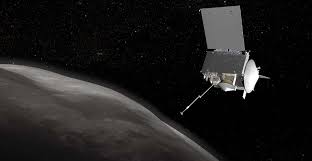NASA’s Struggle to Access Asteroid Samples from OSIRIS-REx Mission
Nearly a month after NASA’s OSIRIS-REx spacecraft successfully deposited a pristine sample of asteroid Bennu’s surface material in the Utah desert, the space agency faces a challenging hurdle: accessing the space rocks. The bulk of the asteroid sample is trapped inside the mission’s canister, and scientists at NASA’s Johnson Space Center (JSC) in Houston are working diligently to unlock its secrets.
Opening the Canister
For the past week, the team at NASA’s JSC has grappled with the ‘Tagsam’ (Touch-and-Go Sample Acquisition Mechanism) head. This round sampler head, located at the end of an articulated arm on the spacecraft, was used to collect the sample from Bennu. The Tagsam holds the majority of the asteroid sample and is being carefully handled by the team within a specialized glovebox under a nitrogen flow to prevent contamination.
Challenges and Solutions
Efforts to open the Tagsam head have faced complications. NASA reported that two of the 35 fasteners on the Tagsam head couldn’t be removed using the current tools approved for use in the OSIRIS-REx glovebox. The team is actively developing new approaches to safely extract the material while preserving its integrity.
The Abundance of Sample
When the aluminum lid to the sample canister was initially removed, the mission team found black dust and debris on the canister’s avionics deck. Although the sample canister hasn’t been opened yet, NASA revealed samples collected from the outside of the Tagsam head on October 11. These samples exceeded expectations, presenting a delightful challenge for the scientists.
Analyzing the Samples
The samples collected so far exceed the mission’s goal of gathering 60 grams of asteroid debris. To date, NASA has retrieved 70.3 grams of rocks and dust. Researchers have already begun analyzing these samples and have identified an abundance of carbon and water molecules.
Mission Recap
The OSIRIS-REx mission, initiated in September 2016, reached asteroid Bennu in December 2018 after nearly two years of observations. In October 2020, the spacecraft successfully landed on Bennu’s surface, securing a sample. The asteroid samples were delivered to the Utah desert on September 24, marking the culmination of this ambitious seven-year mission.
Month: Current Affairs - October, 2023
Category: Science & Technology Current Affairs








